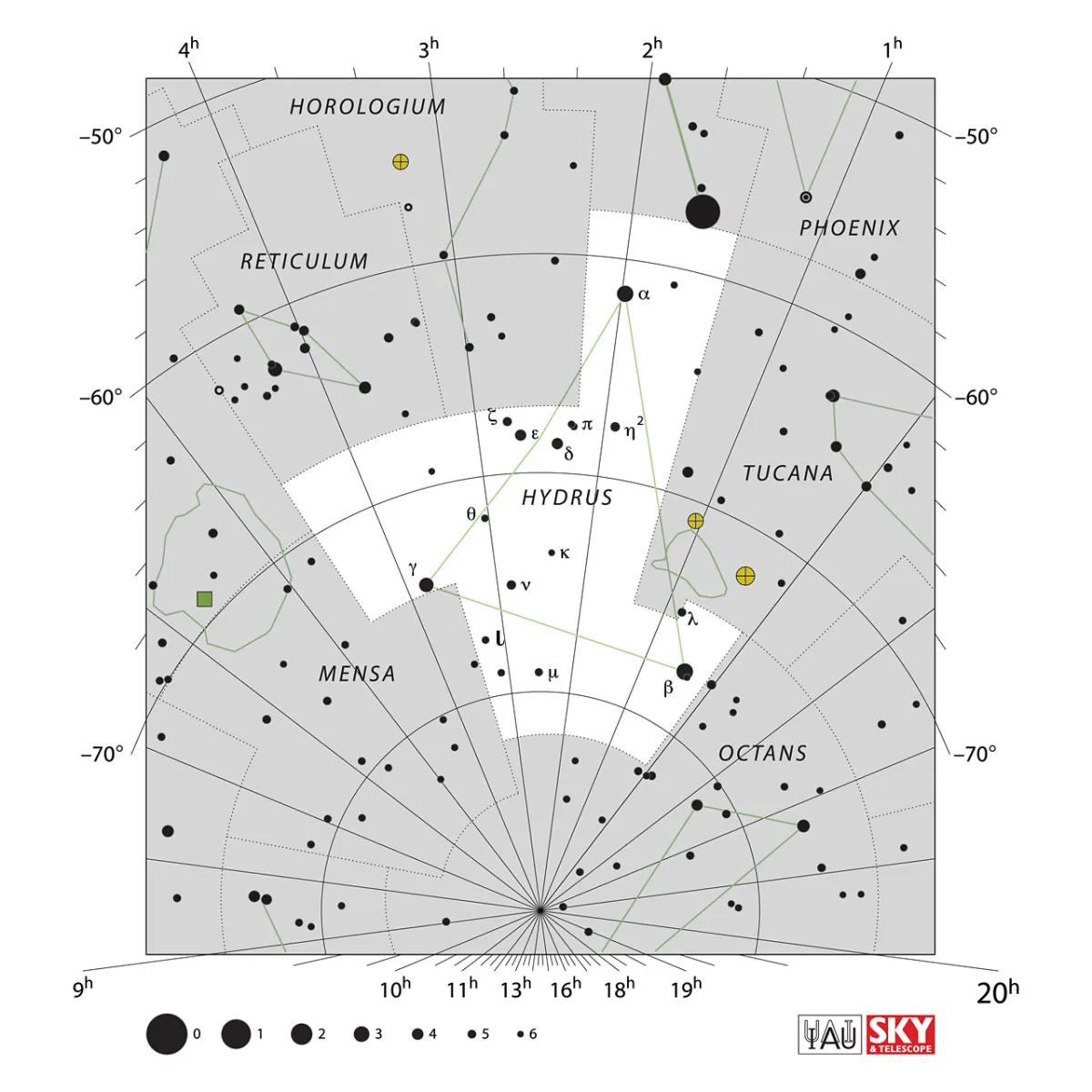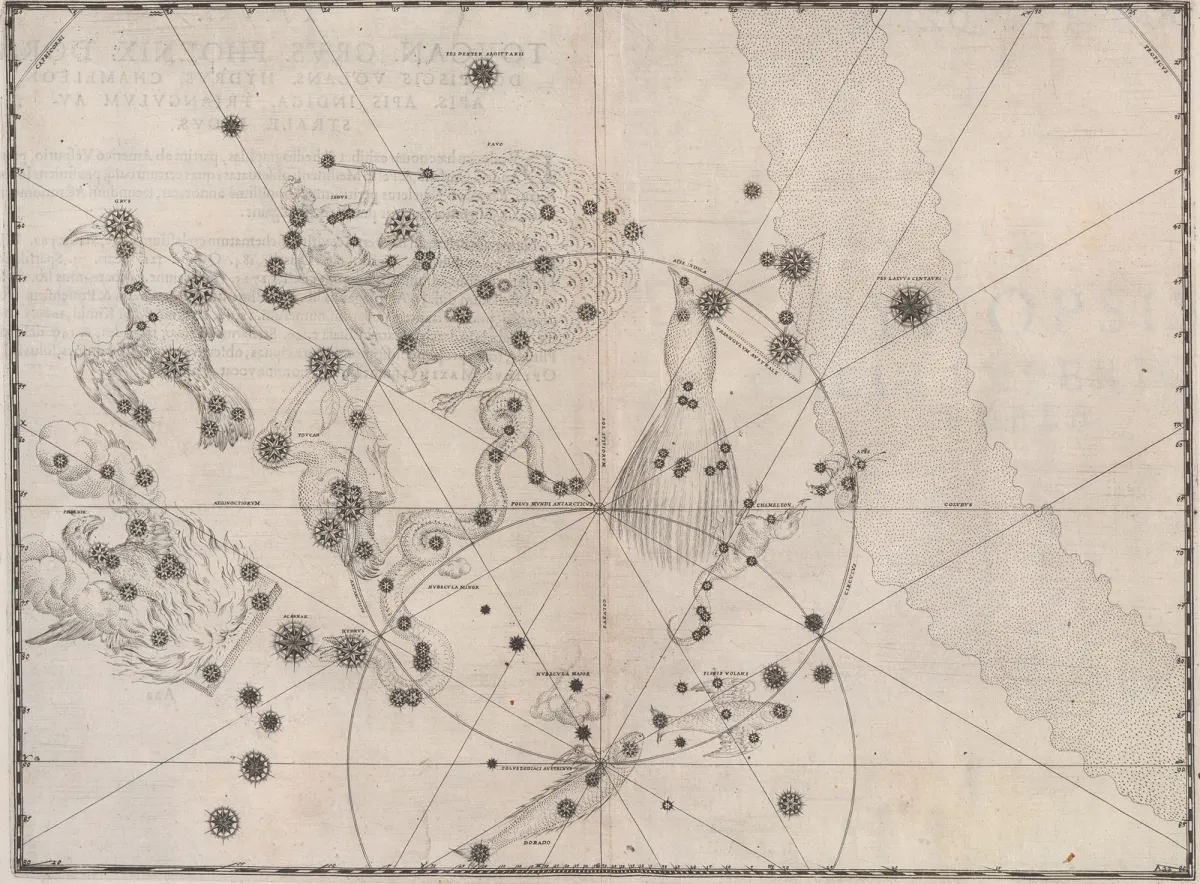Constellation Hydrus (Male Water Snake)

Properties
The constellation does not have any prominent star groupings. However, it is located between the Small and Large Magellanic Clouds, south of the star Achenar at the end of the river Eridanus, making it easy to find. The constellation is significantly smaller than the Great Water Snake, with an area of 243 square degrees. The centre culminates around midnight on October 26 each year. It is not visible from Europe.[9, 15]
| α Hyi | Head Of Hydrus |
| IAU Name | Hydrus |
| IAU Genitive | Hydri |
| IAU Abbr. | Hyi |
| English Name | Male Water Snake |
| Culmination at local midnight | 31 October |
| Season (Latitude +0.0°) | July … March |
| Right Ascension (J2000.0) | 00h 06m 08s … 04h 35m 11s |
| Declination (J2000.0) | -82° 03' 52" … -57° 50' 54" |
| Area | 243 deg2 |
| Neighbours (N↻) | Eri, Phe, Tuc, Oct, Men, Dor, Ret, Hor |
Catalogues

History
The German sky cartographer Johann Bayer introduced this constellation in 1603 as a small counterpart to the Hydra. It first appeared in his Uranometria. [7]